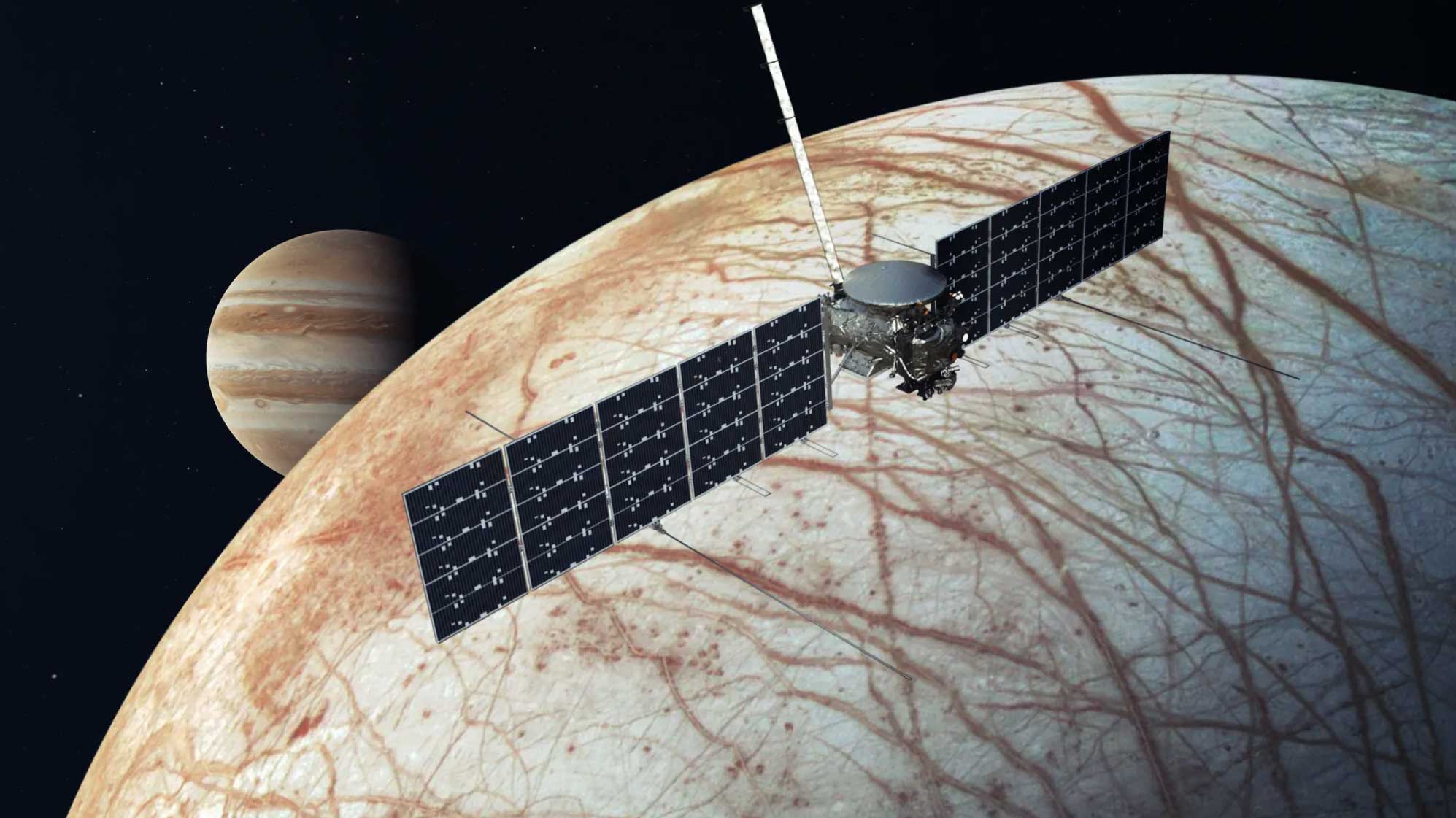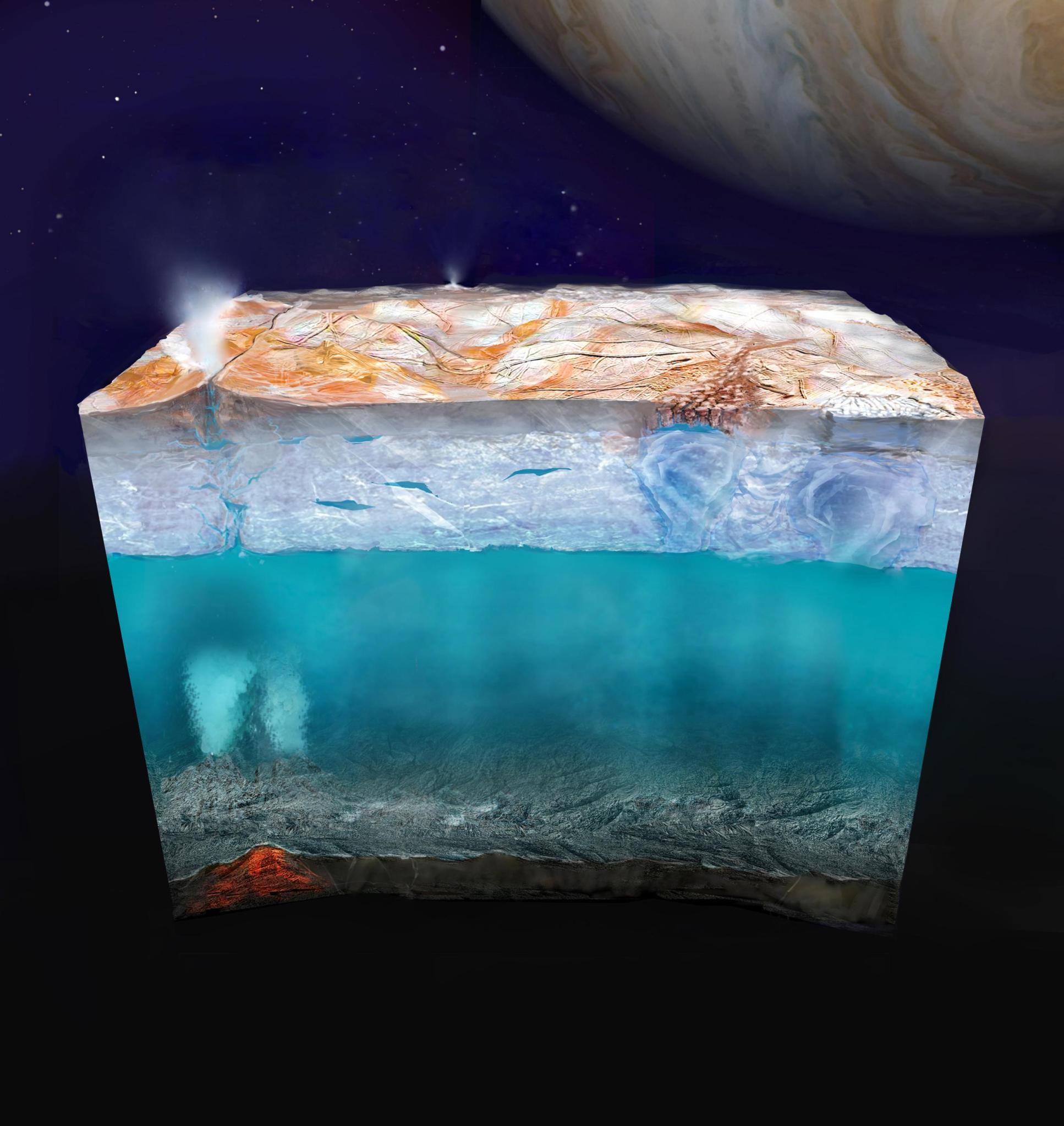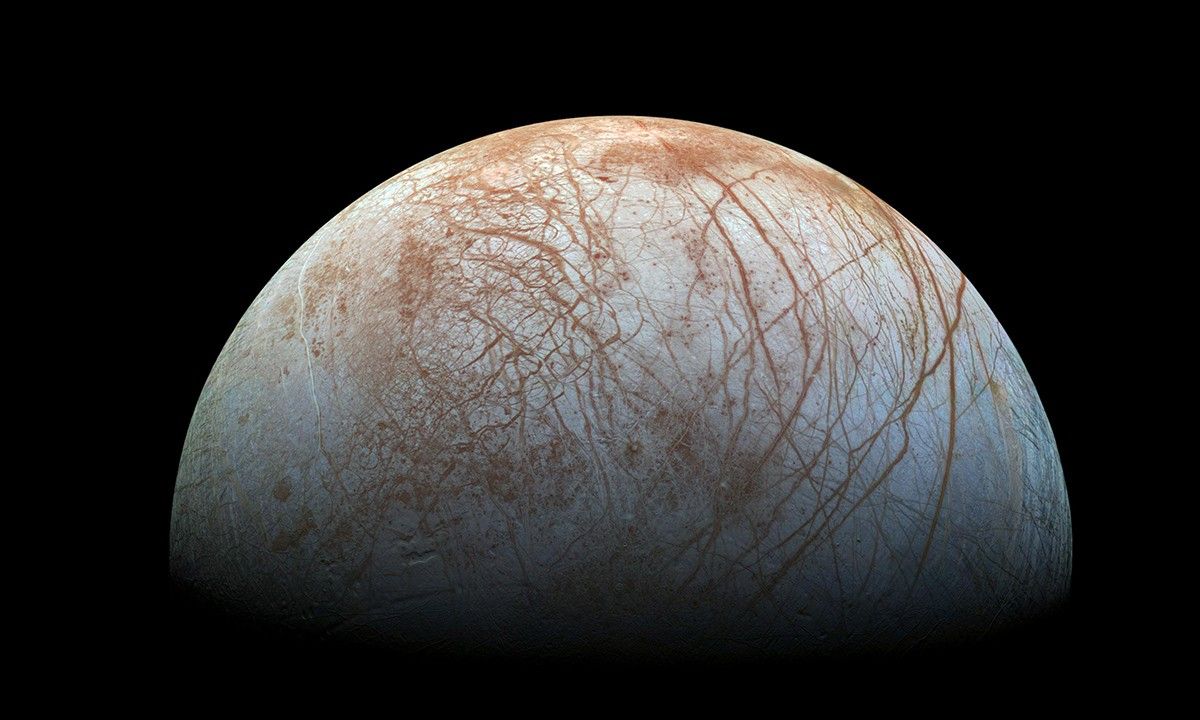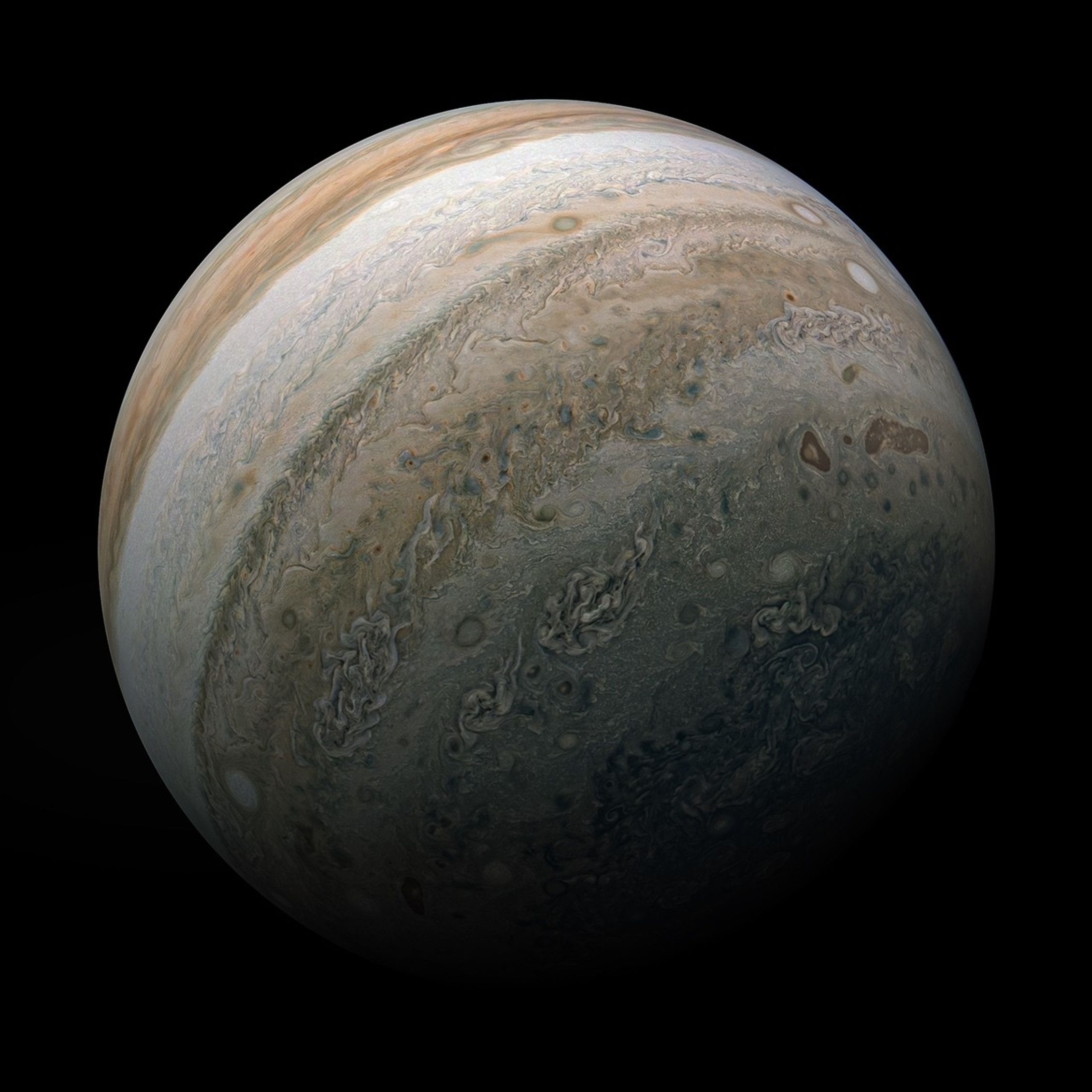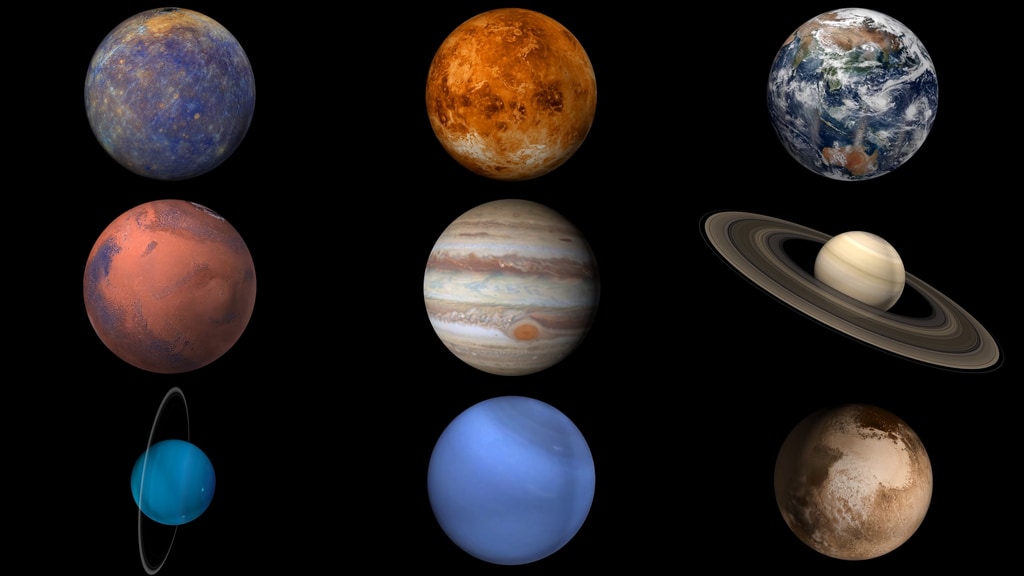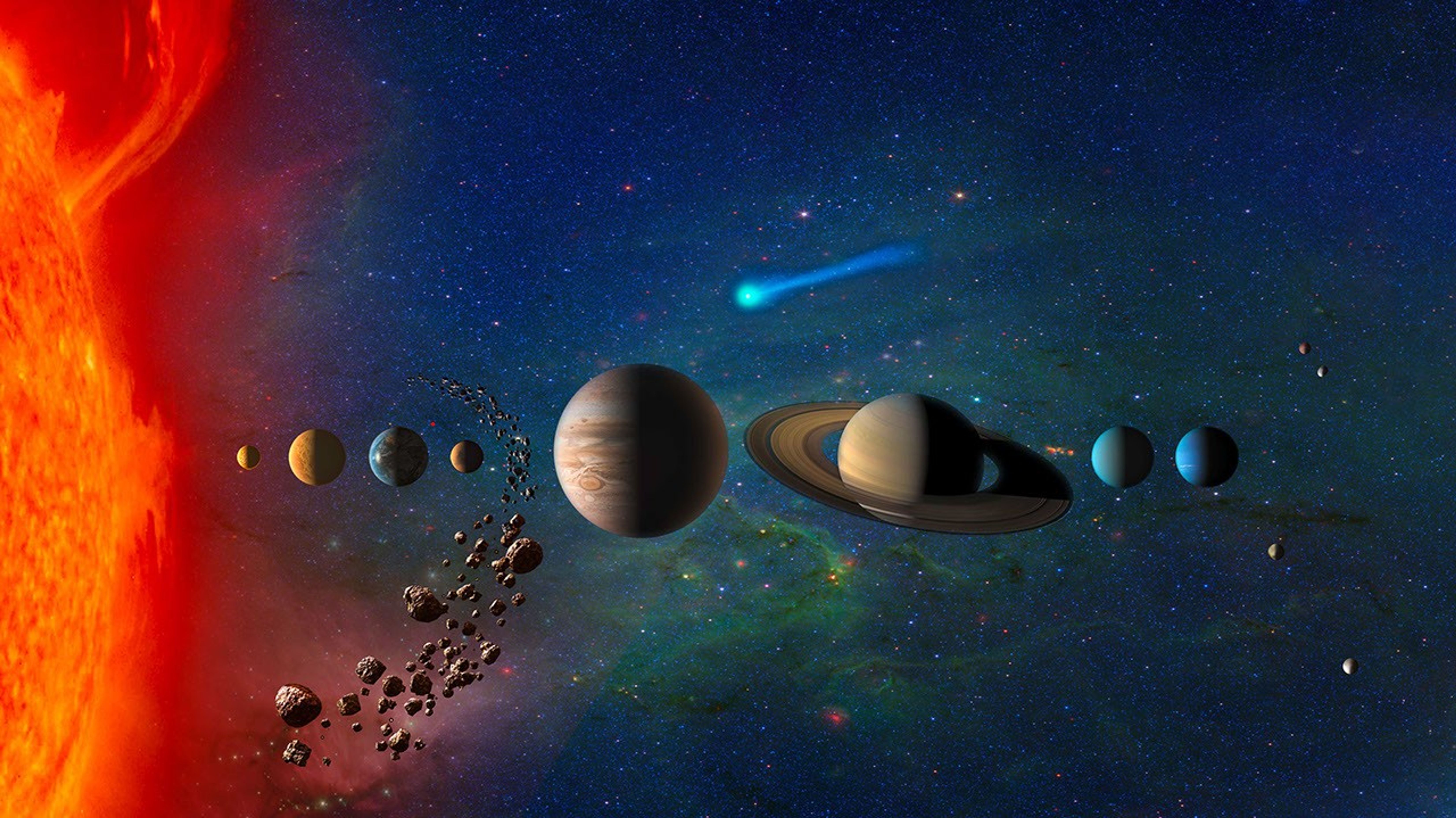What Is Europa Clipper’s Main Science Goal?
Europa Clipper’s main science goal is to determine whether there are places below the surface of Jupiter’s icy moon, Europa, that could support life.
Overview
Credit: NASA
Jupiter’s moon Europa shows strong evidence for an ocean of liquid water beneath its icy crust. Beyond Earth, Europa is considered one of the most promising currently habitable environments in our solar system.
Below Europa’s icy surface, evidence suggests there is a global ocean with more water than all of Earth’s oceans combined. Europa could have all the “ingredients” needed for life as we know it:
- Water: Twice as much as Earth’s oceans
- Organics: Essential chemical building blocks from a variety of sources
- Energy: Chemical energy sources from the surface and the sea floor
- Stability: Conditions remaining similar for 4 billion years
NASA's Europa Clipper spacecraft will perform approximately 50 close flybys of the moon, gathering detailed measurements to investigate whether the moon could have conditions suitable for life. Europa Clipper is not a life detection mission — its main science goal is to determine whether there are places below Europa’s surface that could support life.
Science Objectives
Europa Clipper has three main science objectives:
| Determine the Thickness of Europa’s Icy Shell & How the Ocean Interacts With the Surface | Scientists aim to determine the thickness of Europa’s icy shell – the moon’s outer layer that includes its surface. They will discover whether there’s liquid water within and beneath the shell. Researchers will estimate the size, saltiness and other qualities of Europa's ocean. They also will determine how the ocean interacts with the surface: Does anything in the ocean rise up through the shell to the top? Does any material from the surface work its way down into the ocean? |
| Investigate Europa’s Composition | Scientists will investigate the composition of Europa's ocean to determine if it has the ingredients to permit and sustain life. |
| Characterize the Geology of Europa | Scientists will study how Europa’s surface features formed and locate any signs of recent activity such as sliding crust plates or plumes that are venting water into space. |
Science Instruments
Imagers / Cameras
Europa Imaging System (EIS)
A wide-angle camera and a narrow-angle camera, each with an eight-megapixel sensor, will produce high-resolution color and stereoscopic images of Europa. They will study geologic activity, measure surface elevations, and provide context for other instruments.
Europa Thermal Emission Imaging System (E-THEMIS)
The thermal imager uses infrared light to distinguish warmer regions on Europa where liquid water may be near the surface or might have erupted onto the surface. It will also measure surface texture to understand the small-scale properties of the surface.
Imagers / Spectrometry
Europa Ultraviolet Spectrograph (Europa-UVS)
By collecting ultraviolet light with a telescope and creating images, the mission’s ultraviolet spectrograph will help determine the composition of Europa’s atmospheric gases and surface materials. It will also search near Europa for signs of plume activity.
Mapping Imaging Spectrometer for Europa (MISE)
The mission’s infrared spectrometer will map the composition and distribution of ices, salts, organics, and the warmest hotspots on Europa. The maps will help scientists understand the moon’s geologic history and determine if Europa’s suspected ocean is suitable for life.
Plasma & Magnetic Field
Europa Clipper Magnetometer (ECM)
The magnetometer will study Europa’s magnetic field and aims to confirm that Europa’s ocean exists, measure its depth and salinity, and measure the moon’s ice shell thickness. It will also study Europa’s ionized atmosphere and how it interacts with that of Jupiter.
Plasma Instrument for Magnetic Sounding (PIMS)
Europa’s ionosphere, and plasma trapped in Jupiter’s magnetic field, distort magnetic fields near Europa. The PIMS instruments will distinguish those distortions from Europa’s induced magnetic field, which carries information about Europa’s ocean.
Radar & Gravity
Gravity/Radio Science
Europa and its gravity field flex as the moon’s non-circular orbit carries it closer, then farther, from Jupiter. Measuring Europa’s gravity at various points in the moon’s orbit will show how Europa flexes and help reveal its internal structure.
Radar for Europa Assessment and Sounding: Ocean to Near-surface (REASON)
Ice-penetrating radar will probe Europa’s icy shell for reflections from the moon’s suspected ocean, and study the ice’s structure and thickness. It will also study the moon’s surface topography, composition, and roughness.
Chemical Analysis
MAss Spectrometer for Planetary EXploration/Europa (MASPEX)
The mass spectrometer will analyze gases – both in Europa’s faint atmosphere and in possible plumes. It will study the chemistry of the moon’s suspected subsurface ocean, how ocean and surface exchange material, and how radiation alters compounds on the moon’s surface.
SUrface Dust Analyzer (SUDA)
Tiny meteorites eject bits of Europa’s surface into space, and a subsurface ocean or reservoirs might vent material into space as plumes. The dust analyzer will identify that material’s chemistry and area of origin, and offer clues to Europa’s ocean salinity.



























